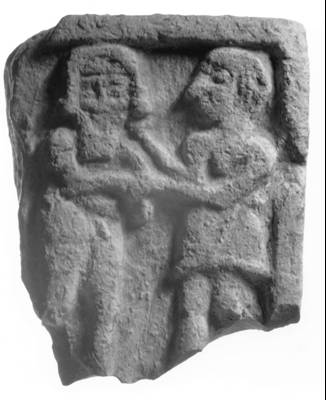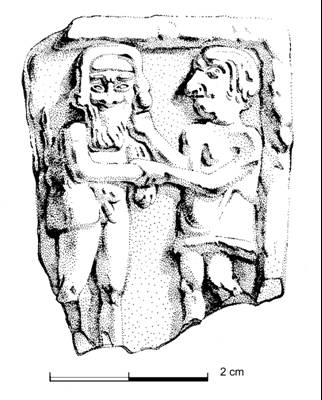Istituto Lombardo (Rend. Lettere) 150, pp. 171-208.
See full text
This paper can be divided into two sections: sections 1-5 (by C. Mora) retrace the history of the studies related to the Epos of Gilgamesh, presenting a history of the Hittite studies and excavations at Hattusa (section 1), the historical background(s) of the Epos of Gilgamesh (section 2), the contents of the 'canonical version' of the poem (section 3), the artistical evidences of the poem (section 4), and the notoriety of the composition in modern times (section 5), when Gilgamesh has been perceived as a prototype of a 'Suchende' (definition by Hermann Hesse); the second section, section 6-7 (by M. Giorgieri), offers respectively an introduction to Hittite versions of Gilgamesh's epos and two inedite Hittite tablets (kept by a private owner [unknown provenance], named P1 and P2, and datable to the 13th cent. BC) presenting some passages of Gilgamesh's story. These fragments can be connected to other Hittite versions of this epos (see CTH 341.III in the HPM, edited by Rieken et al. in 2009), displaying a text which can be reconstructed as a composition on three tablets (thus, a briefer version in comparison with the twelve tablets of the 'canonical composition' of the Neo-Assyrian period, found in the library of Assurbanipal at Nineveh [7th cent. BC]). More in detail, P1 resembles KUB 8.57+, while P2 shows several analogies with KUB 60.14+ [see here for the respective Konkordanz - Abfrage].
As for Urkesh studies, C. Mora reports (on p. 175, n. 6) G. Buccellati's opinion about an organicity in the Akkadian composition of the poem: “Per l'ipotesi che esistesse anche all'epoca del regno di Akkad (seconda metà III millennio a.C.) un poema organico su Gilgamesh in lingua accadica, si veda Buccellati [2019] (cf. p. 185, n. 35).
Another reference to G. Buccellati is on p. 187, where C. Mora recalls the scholar's interpretation of Gilgamesh's epos under a sapiental perspective with a long quotation verbatim: “La ricerca della vita non deve essere più considerata, se la mia lettura è corretta, come il tema centrale del poema. Certo, Gilgamesh è pur sempre presentato come l'eroe che va in cerca di fama e poi, dopo l'esperienza dell'amicizia e della morte di Enkidu, in cerca della vita: ma ciò diventa, in effetti, un pretesto narrativo per mostrare ben altra tesi. L'enfasi è spostata dall'oggetto della ricerca, la vita, allo sforzo stesso della ricerca in quanto tale, ai presupposti su cui è basata e alle conseguenze cui conduce: queste conseguenze non sono esterne, come lo sarebbe il perseguimento di un bene, foss'anche la vita fisica, ma invece sono interne, profondamente psicologiche e si accentrano sul mutamento spirituale del soggetto che la ricerca ha intrapreso. Perciò la conclusione è compiuta e perfetta con la tavoletta XI: Gilgamesh non è un campione temporaneamente sconfitto e a cui resta solo da ritentare, ma invece un uomo per cui la sconfitta diventa il punto d'inizio per una nuova comprensione delle vere dimensioni umane della vita. ç una conclusione malinconica e inconcludente da un punto di vista eroico; da un punto di vista sapienziale, invece, è una conclusione piena e che non ammette ulteriori sviluppi” (Buccellati 1972, p. 34).
For sure, the most important reference to Urkesh material is presented on p. 184, where C. Mora discusses the limestone plaque portraying Gilgamesh and Enkidu [bottom page; see images infra]: “Nel più recente contributo di Kelly-Buccellati (2006) si propone, alla luce di un'analisi approfondita e di criteri particolarmente rigorosi, di riconoscere la rappresentazione dei due eroi Gilgamesh e Enkidu in una placchetta di calcare ritrovata a Urkesh (Siria settentrionale, area hurrita) e risalente alla seconda metà del III millennio a.C.” [see Fig. 3 on p. 185].


[M. De Pietri – April 2020]